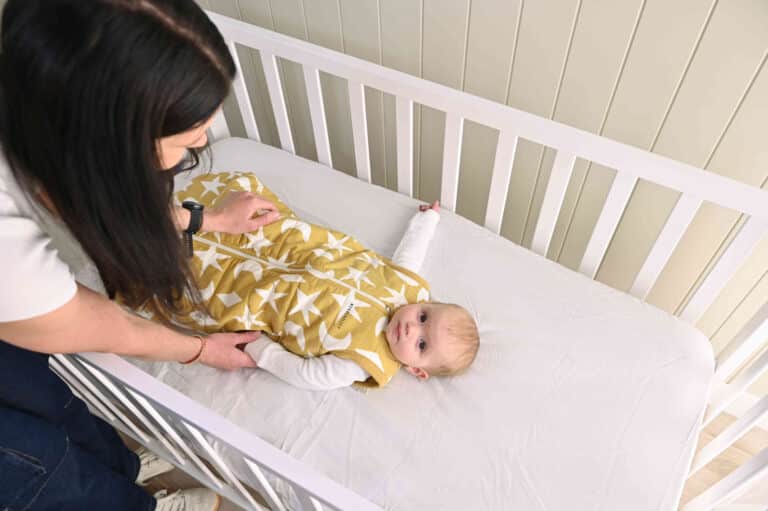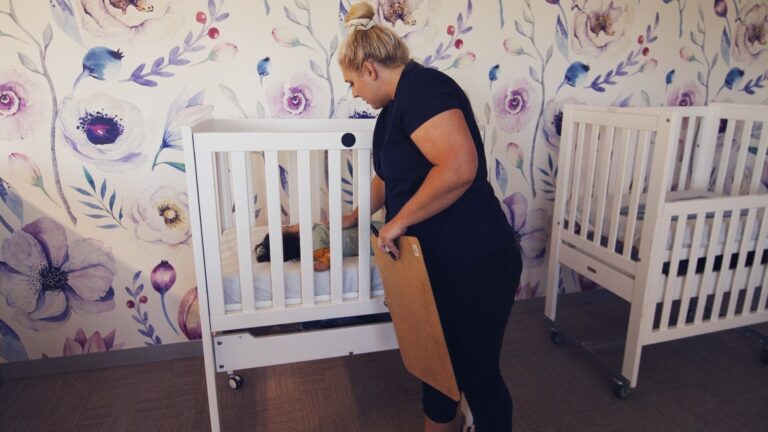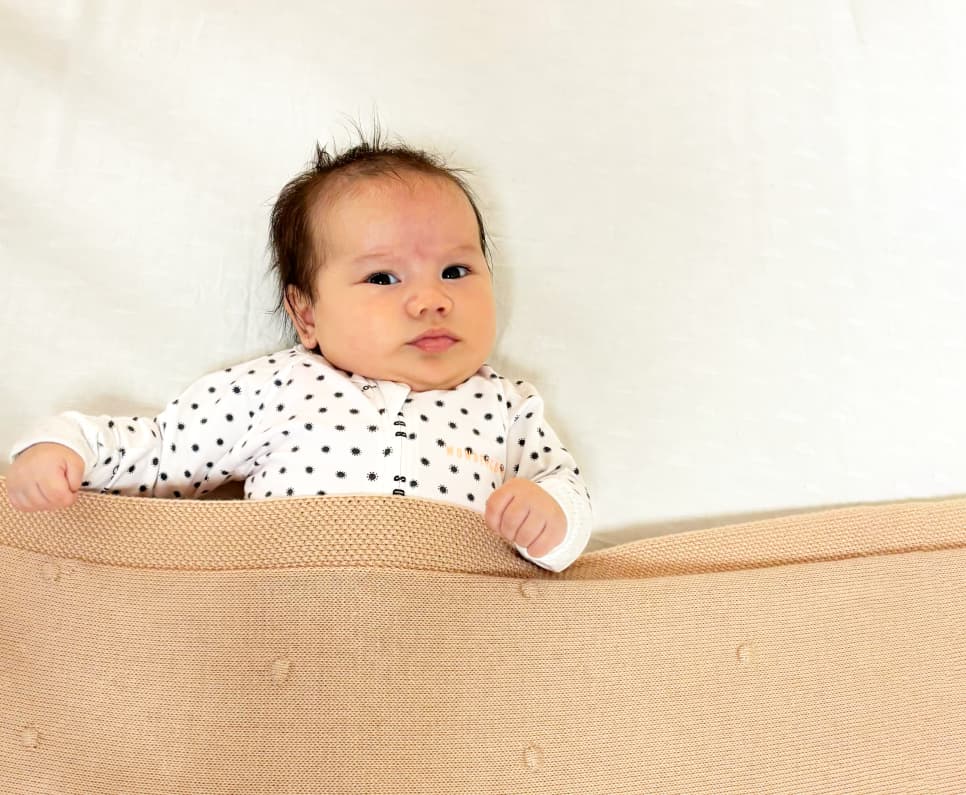Red Nose recommends that babies sleep in their own safe sleep space in the same room as their parent or caregiver for at least the first six months. Research shows that this can help reduce the risk of sudden infant death by 50 percent.
Things to consider when using a bassinet
- Bassinets are for short-term use only. Move baby to a safe cot when they show signs of being able to roll.
- Side panels must always be kept in the upright position for sleep.
- Ensure folding legs are locked and cannot collapse when in use.
- Place the bassinet away from curtains, blinds, heaters or power points.
- Ensure all screws and bolts are tight to avoid accidental collapse.
How to make up a safe bassinet
- Ensure the mattress is firm and flat, and the correct size for the bassinet
- Use only lightweight sheets or blanket, firmly tucked in and pulled up to the level of baby’s chest, or use a safe sleeping bag that is well fitted, with baby’s arms out.
- Keep baby’s face and head uncovered, and don’t leave any loose items in the cot such as soft toys, comforters, doonas or thick underlays.
- Dress baby to the temperature of the room making sure they are comfortably warm, but not hot. Remove any beanies and hats for sleep.
- Keep baby smoke free, before and after birth. Never smoke where baby sleeps.
Once baby is showing signs of being able to roll, it’s time to move them to a safe cot – this is usually around four months, but it will depend on your child.
Did you find this helpful?
Good job! Please give your positive feedback
How could we improve this post? Please Help us.




